This is an animated GIF of S06-0161 overlaid with the original Viking image f070a13. It indicates that the shadows on this Viking face image are not where they seem to be in the MOC image.
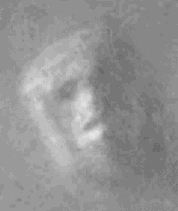
The shadows seem to be coming from the features below:
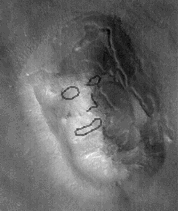
If we do this with the other Viking face photo f035a72 the right eye moves over into the right eye socket. This also occurs because the nose broadens to the right since the sun angle is higher. In both cases though what we perceive as the end of the nose in the MOC images is not the one we see in the Viking images. So the two Viking photos show slightly different face, which is more unlikely to occur by chance. Again the mouth is not the large ravine, but just above it.
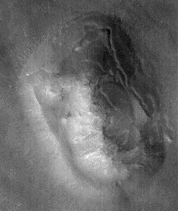
In the image above the right and left eyes are slanted but not
symmetrically to each other. Interestingly the same thing is seen on the
Crowned Face: 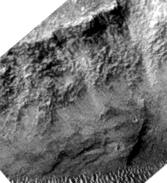 Here
the Crowned Face has been flipped and turned so the faces are roughly
aligned. The right eyebrow is also a similar angle on both faces. The
slant of the left eye is roughly the same on both faces. Also both seem
to have a pointed chin or goatee. Both faces seem to have teeth directly
under the nose protruding, somewhat like fangs or rabbit's teeth.
Here
the Crowned Face has been flipped and turned so the faces are roughly
aligned. The right eyebrow is also a similar angle on both faces. The
slant of the left eye is roughly the same on both faces. Also both seem
to have a pointed chin or goatee. Both faces seem to have teeth directly
under the nose protruding, somewhat like fangs or rabbit's teeth.
There could also be a face shape facing to the right for a sun angle from that direction:
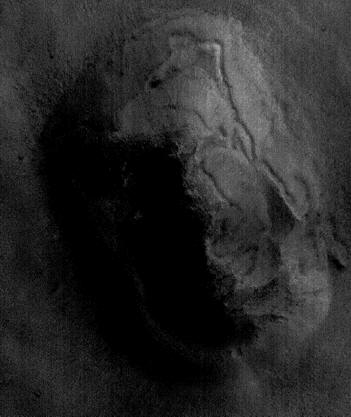
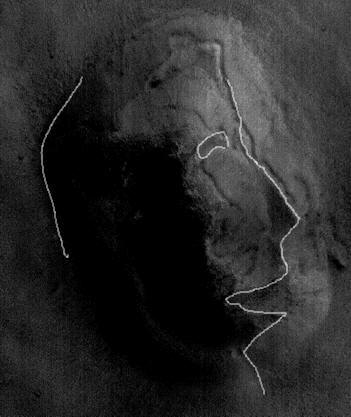
This is similar to a face made from shadows in shape from shading here:
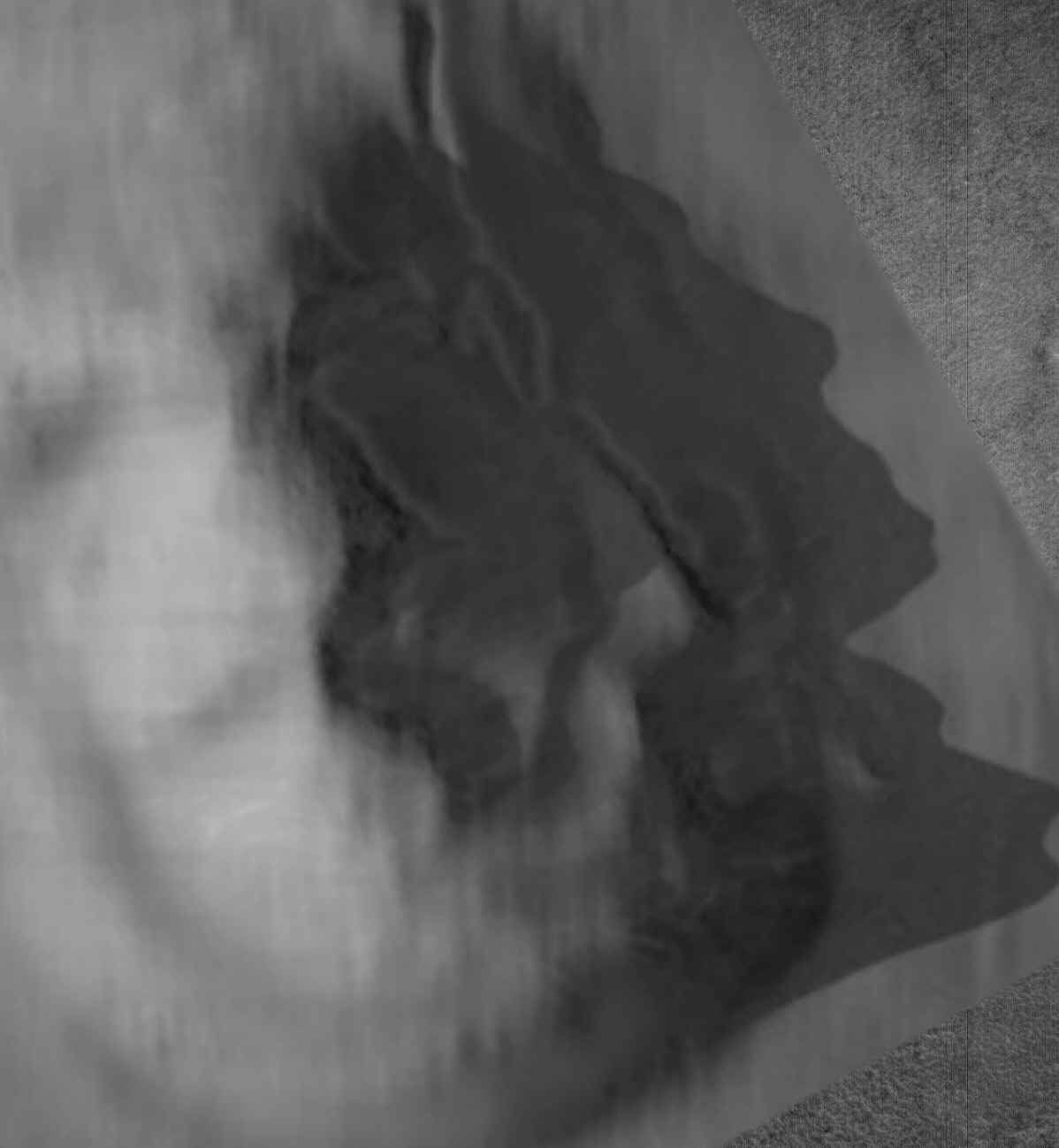
Here the face image has its tones inverted to simulate light coming from the east, this shows the other face shape:
It may also appear as a 3D face:
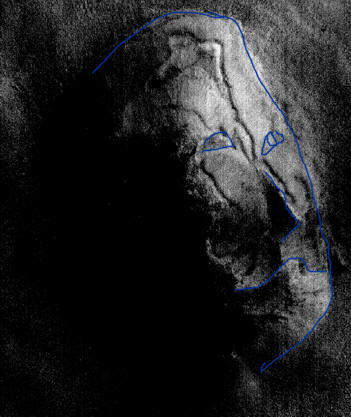
As the sun rose in the east from the image above it may give another face like shadow, the reverse of the Viking images. The image below has the tones inverted, so the light tones are dark and vice versa. This gives an impression of the sun (like in the image above) rising in the East:
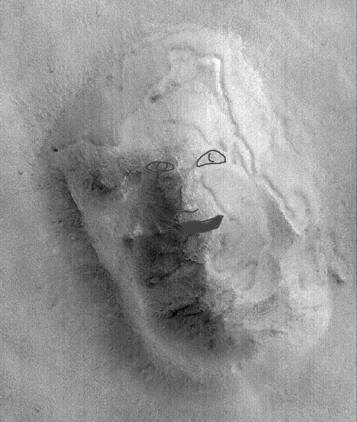
This fits in well with the shape of the left eye: or outlined:
or outlined:  as the cornea points to
the right. Then as the sun rose in the East the left eye shadow might
move to the left, just like in the Viking image the right eye shadow
moves to the right:
as the cornea points to
the right. Then as the sun rose in the East the left eye shadow might
move to the left, just like in the Viking image the right eye shadow
moves to the right: 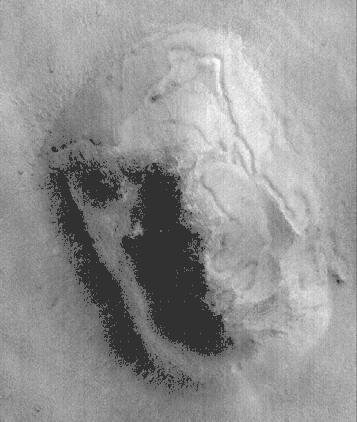 Here the
left shadows in the tone inverted image are made much darker.
Potentially the left eye could move to:
Here the
left shadows in the tone inverted image are made much darker.
Potentially the left eye could move to: 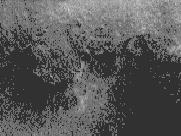 as eye shape A or B:
as eye shape A or B: 
The picture below shows how inverting the tones causes the right eye to appear to be looking to the left. Assuming this is a ridge in the eye socket (and this is hard to tell at this resolution) then inverting the tones like this should be showing what the shadow would look like with the sun rising from the East. This could then bolster the argument the Face is designed to have the eyes looking in different directions.

A has an eye shape as discussed earlier, light from the East would seem to make it stand out with shadows around it. B appears as having an iris shaped shadow in it from a mound. So there could be consecutively 3 left eyes appearing one after another as the sun rose, while at the same time the nose edge could move to the left to make the face appear still in proportion. the effect could be a changing of expression on the face like on the 3 Crowned Faces. So there could be several Viking image like shadows thrown as the sun rises and several more in the afternoon, 2 of which were captured by Viking. Since all these faces are using partially different features to make shadows with then this is more unlikely to happen by chance.
We cannot know until images with shadows with the Sun from the East are taken, or if accurate shape from shading 3D shapes of the face are made so we can simulate the sun rising from this direction. If the face is very old the poles may have moved so these sun angles may not be possible any more.
The objection to all of this is that it may be simple coincidence, the seeing of patterns in random rock formations. Nonetheless the original hypothesis that the Face is designed to cast face like shadows from many directions is being seen as more photos are released. So at some point this may become improbable enough to constitute evidence of artificiality, if not then new photos might be expected to show it becoming less and less artificial looking.